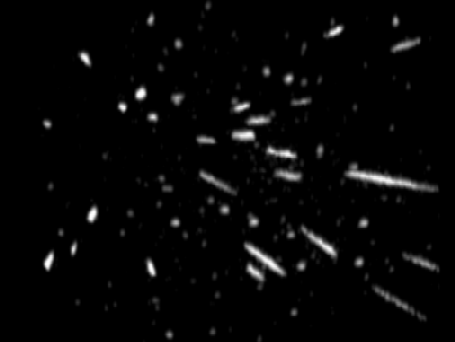Astronomy Picture of the Day
Discover the cosmos! Each day we feature a different image or photograph
of our fascinating universe, along with a brief explanation written by a
professional astronomer.
January 26, 1996

Quadrantids: Meteors in Perspective
Credit:
Sirko Molau,
IMO,
Archenhold-Sternwarte
Explanation:
Meteor showers are caused by streams of solid particles,
dust size and
larger, moving as a group through space. In many cases, the orbits of
these meteor streams can be identified with the
dust tails of comets.
When the Earth passes through the streams,
the particles leave brilliant trails through the night sky as they burn
up in the atmosphere. Above is an image of a meteor shower known as
the Quadrantids.
It was made in January 1995 using
MOVIE,
a new system for making
video meteor observations.
To make the image, frames from a video tape were
computer processed and superposed to show the relative paths of
many meteors in the shower.
The meteor paths are all parallel to each other,
but the
effect of perspective causes the trails to appear to originate
from a distant
radiant point in the sky.
In contrast to the elongated meteor trails, the brighter stars of the
familiar constellation Ursa Major (the Big Dipper) are visible as points
in the lower half of the image.
Tomorrow's picture: M8: An Open Cluster in the Lagoon
| Archive
| Index
| Glossary
| Education
| About APOD |




Authors & editors:
Robert Nemiroff
(GMU) &
Jerry
Bonnell (USRA).
NASA Technical Rep.:
Sherri
Calvo.
Specific rights apply.
A service of:
LHEA
at
NASA/
GSFC




